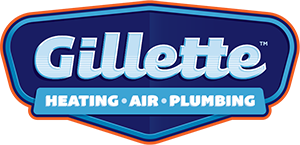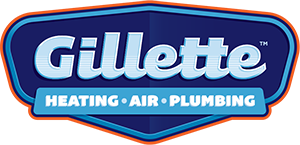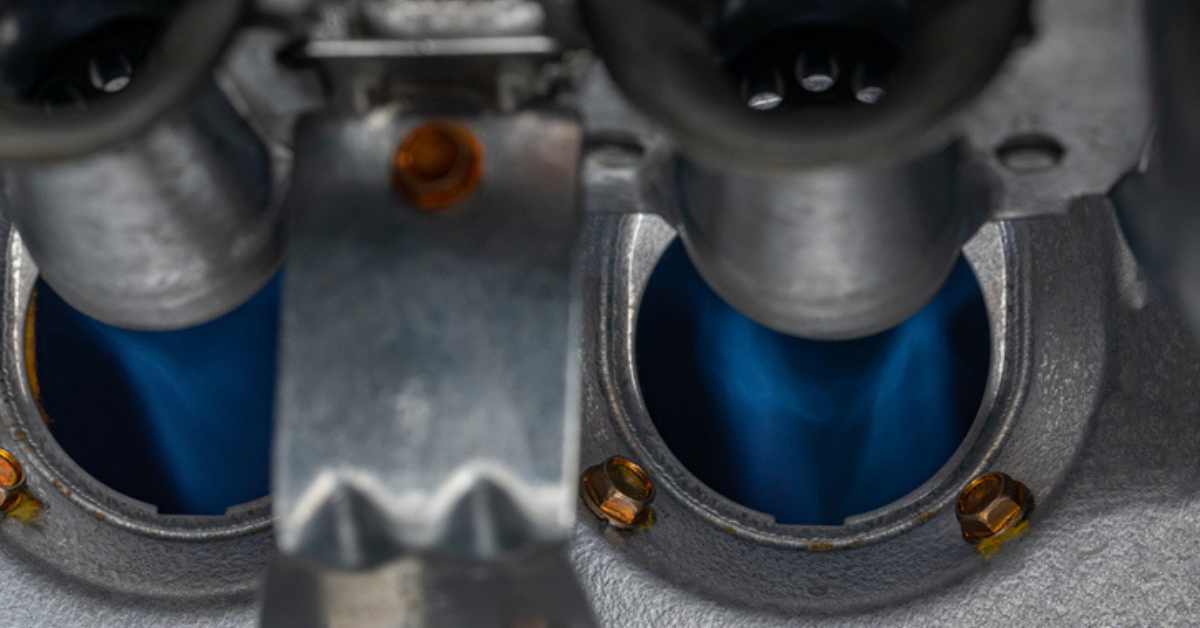Choosing the right furnace size for your Utah home can feel overwhelming. A furnace that is too small may struggle to keep your home warm, while one that is too large can waste energy and drive up heating costs. Understanding how to select the right size can help you stay comfortable while making a smart investment in your home.
If you’re ready to discuss your furnace replacement or installation now and get a professional size assessment for your Utah home, don’t wait until the next cold snap. Contact our experts at Gillette Heating And Air Conditioning through our online contact form or call us directly at (801) 760-7724 to schedule a consultation today.
Understanding Furnace Size: What Does BTU Mean?
When you look at a furnace, its size isn't measured in inches or feet; it’s measured by its heating capacity, expressed in BTUs.
BTU stands for British Thermal Unit. In simple terms, one BTU is the amount of energy required to raise the temperature of one pound of water by one degree Fahrenheit. For a furnace, the BTU rating tells you how much heat the unit can produce in one hour. This is often written as BTU/h.
A furnace with a higher BTU rating is capable of generating more heat, which generally means it can heat a larger space. However, relying on a simple rule-of-thumb like "X BTUs per square foot" is outdated and can lead to a costly mistake. The right BTU capacity for your home is based on several specific factors that account for our unique Utah climate and your home's structure.
Why Bigger Isn’t Always Better
You might think choosing a furnace with a higher BTU rating than you need would guarantee your home stays warm, but this is actually a common and costly misconception. Installing a furnace that is too large, known as an oversized unit, creates several problems that impact your comfort, your wallet, and the unit’s lifespan:
- Short-Cycling: An oversized furnace heats your home too quickly. It rapidly satisfies the thermostat, shuts off, and then turns back on shortly after. This on-again, off-again pattern is called "short-cycling."
- Inconsistent Comfort: Because the furnace doesn't run long enough, the heat is often unevenly distributed. You might experience hot and cold spots throughout your home, with some rooms feeling too warm and others remaining chilly.
- Reduced Energy Efficiency: A furnace uses the most energy every time it starts up. When it short-cycles, it constantly operates in this less efficient starting phase, driving up your utility bills.
- Increased Wear and Tear: The frequent starting and stopping puts immense stress on internal components like the heat exchanger and blower motor, potentially leading to more frequent repairs and a shorter overall life for the unit.
On the other hand, a furnace that is undersized will run almost constantly and struggle to keep up on the coldest days, leading to high bills and still leaving your home feeling cold. The goal is to find the "Goldilocks" fit—one that runs long enough to heat your home evenly and efficiently without cycling too often.
The Factors That Determine Your Home's True Heating Need
To accurately determine the heating capacity your Utah home requires, a professional needs to look far beyond just the square footage. They perform a detailed calculation that accounts for all the ways your home gains or loses heat—this is known as a load calculation, following the industry standard ACCA Manual J protocol.
Here are the key factors that significantly influence your home's heating needs in Provo and Utah County:
1. Climate and Location
The severity of winter temperatures in the Utah Valley area is a primary consideration. The furnace size calculation must be based on the coldest temperatures we expect to experience locally, not on a national average. A home in a colder climate zone like ours naturally requires a higher BTU capacity than the exact same size home in a mild climate.
2. Home Size and Layout
While not the only factor, square footage is still essential. Professionals measure the total volume of all heated areas, including basements and multi-story spaces. Beyond the size, the layout matters:
- Ceiling Height: Taller ceilings mean more air to heat, requiring a higher BTU output.
- Open vs. Zoned Areas: An open floor plan distributes air differently than a home with many closed-off rooms, which can impact how heat is delivered.
3. Insulation, Windows, and Doors
The quality of your home’s "envelope" is arguably the most critical factor. The better your insulation, windows, and doors are at preventing heat loss, the smaller the furnace you may need.
- Insulation R-Value: This number measures the insulation's resistance to heat flow. High R-values in the walls, attic, and floors mean less heat escapes.
- Window and Door Quality: Single-pane windows and old, drafty doors can be major sources of heat loss. New, energy-efficient, multi-pane windows and weather-sealed doors help retain heat.
- Airtightness: Any cracks, gaps, or leaks around windows, electrical outlets, or where walls meet the ceiling allow heat to escape and cold air to infiltrate. A tighter home is easier to heat.
4. Ductwork and System Type
The size and condition of your existing ductwork are essential. If your ducts are too small, they can restrict airflow, which can cause an otherwise correctly-sized furnace to overheat and short-cycle. Additionally, the type of furnace you choose affects the overall sizing consideration:
- Furnace Efficiency (AFUE): The Annual Fuel Utilization Efficiency (AFUE) rating tells you how effectively the furnace converts fuel into usable heat. A furnace with a 95% AFUE rating, for example, converts 95% of the fuel it uses into heat for your home. You can learn more about finding the right system on our furnace services page.
- Single-Stage vs. Two-Stage or Variable-Speed: A single-stage furnace is either on (running at 100% capacity) or off. Two-stage and variable-speed furnaces can modulate, or adjust, their heating output, allowing them to run at a lower, more efficient capacity for longer periods, which provides more consistent comfort. In the extreme temperatures of Utah, a modulating system can be a great choice for better comfort and efficiency.
The Professional Standard: The Manual J Load Calculation
At Gillette Heating And Air Conditioning, we take pride in our expertise and ability to provide a tailored heating solution for every home. That is why we rely on the industry's gold standard: the Manual J Load Calculation.
A professional load calculation is an extensive, room-by-room analysis that mathematically determines your home’s exact heat loss during the coldest part of the year. This method eliminates the uncertainty of simple square-footage estimates and provides a precise figure for the BTU capacity your new furnace should have.
What Goes Into a Manual J Calculation?
When our expert technicians visit your Provo or Utah County home, they will gather detailed information on all the heat-transfer factors mentioned above. This includes:
- Measuring Every Room: Dimensions, including ceiling height, are precisely recorded.
- Assessing Building Materials: Detailed data on your walls, roof, windows, and floors, including insulation R-values, is collected.
- Counting Heat Sources: The number of windows, exterior doors, and even internal heat-generating appliances and occupants are factored in.
- Analyzing Orientation: The direction your home faces (north, south, east, west) is considered, as sun exposure affects heat gain and loss.
- Accounting for Local Climate Data: We use specific local temperature and climate data for the Utah area to ensure the calculation is accurate for our environment.
By combining all this data into the Manual J formula, we arrive at the precise heating load for your home. This process ensures we recommend a furnace that is just right—powerful enough to keep you warm on the coldest day, yet efficient enough to save you money on fuel throughout the entire heating season.
Key Questions to Ask a Furnace Installer
When you are considering a new furnace installation, especially if you are replacing an older model, make sure you ask potential contractors these important questions. Their answers will confirm if they are committed to proper sizing, which is the cornerstone of an efficient and comfortable system.
- "Will you perform a Manual J Load Calculation on my home?" This is the most crucial question. If the answer is no, and they offer a simple square-footage estimate or suggest replacing your old unit with the same size, it is a significant warning sign that could lead to an oversized system.
- "What is the required BTU output you recommend, and what is the furnace's AFUE rating?" This clarifies the size recommendation and the unit's efficiency. The higher the AFUE rating, the more efficient the unit will be.
- "Will the new furnace be compatible with my existing ductwork?" An honest answer here shows they are considering your whole HVAC system, not just the new furnace unit itself.
Choosing the right furnace size is the single most important decision you’ll make when replacing your heating system. It’s the difference between a house with consistent, cozy temperatures and one with frustrating hot and cold spots and unexpectedly high energy bills.
Trust Local Experts for Accurate Furnace Sizing in Utah County
Don't let the thought of replacing your furnace be a source of stress. Our team at Gillette Heating And Air Conditioning serves Provo and all of Utah County with the expertise you can trust to get the job done right. We perform comprehensive Manual J Load Calculations to ensure your new furnace is perfectly sized for your unique home and the specific needs of our climate.
We are committed to giving you honest, detailed advice so you can be confident your home will stay consistently warm and comfortable all winter long. If you’re ready to replace an aging unit or install a new, efficient furnace, reach out to a team that values your long-term comfort and savings.
Reach out to us today by filling out our online contact form or calling us at (801) 760-7724 to schedule your professional furnace assessment.


